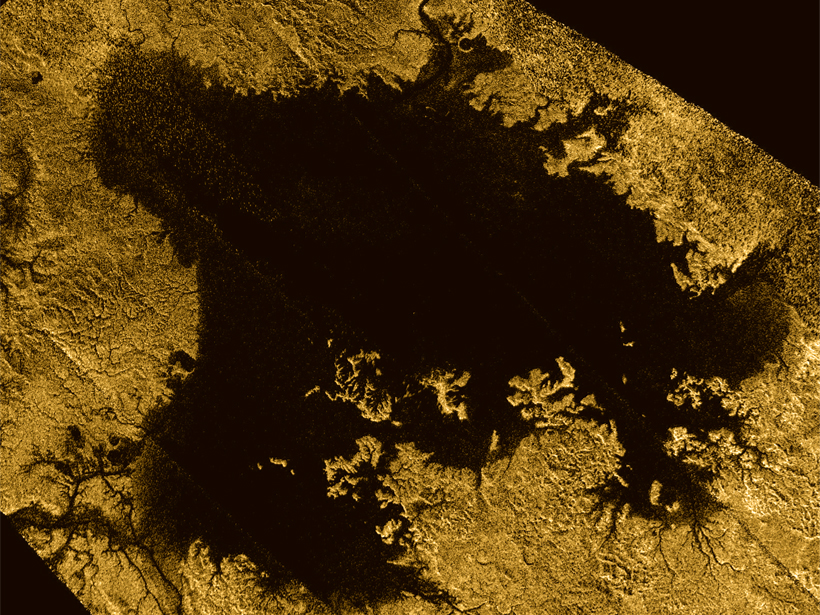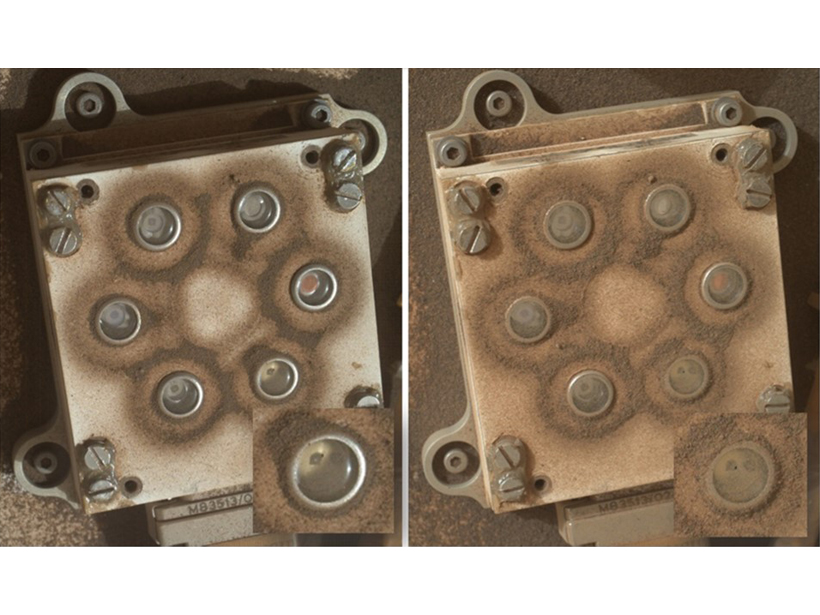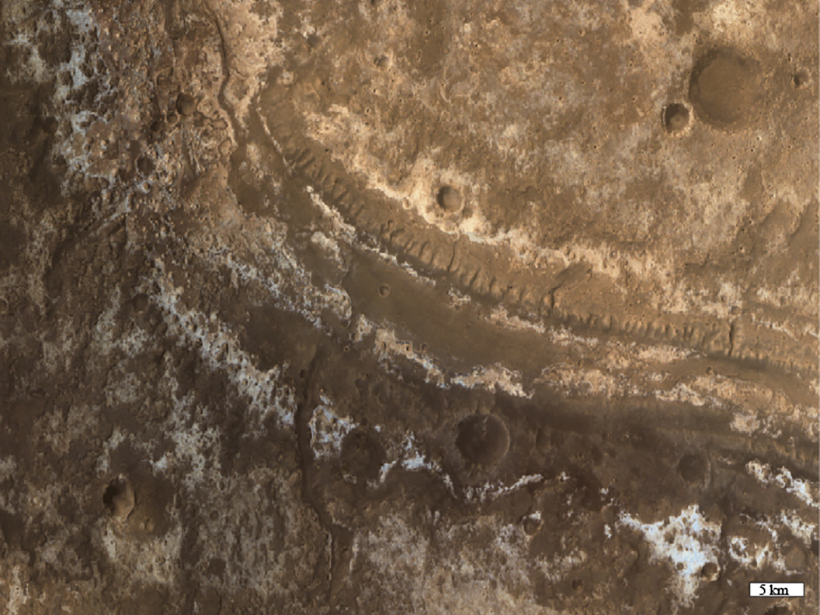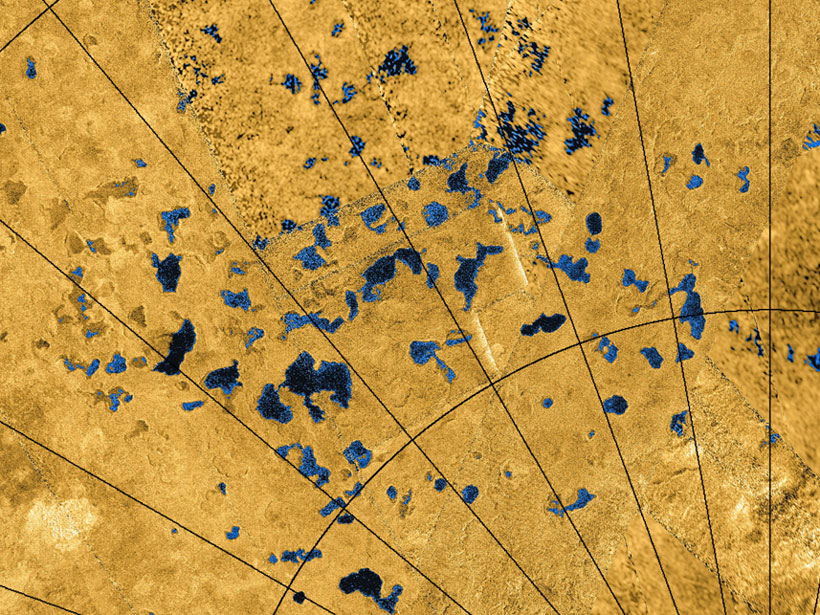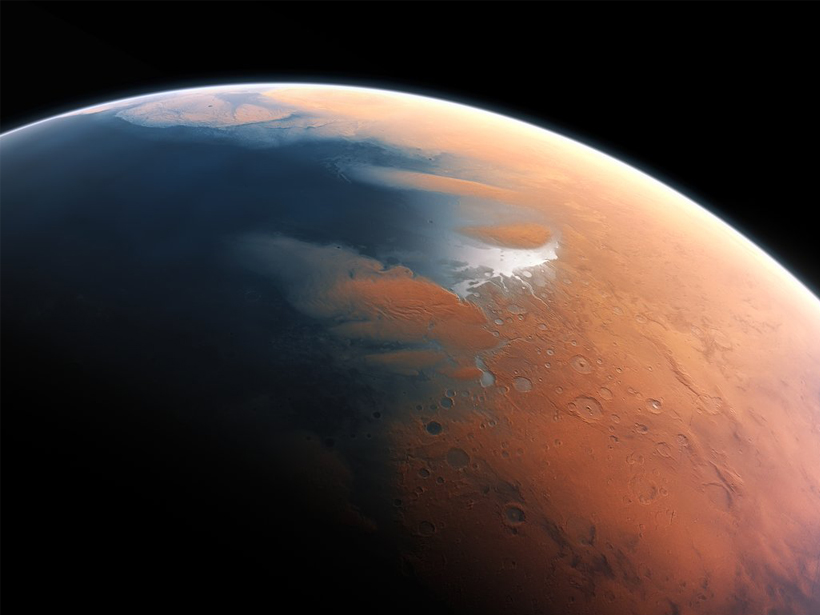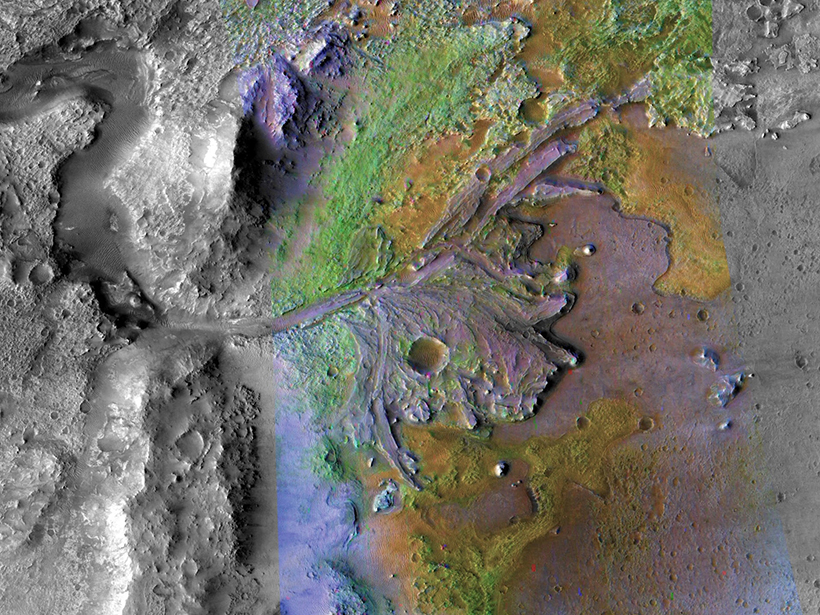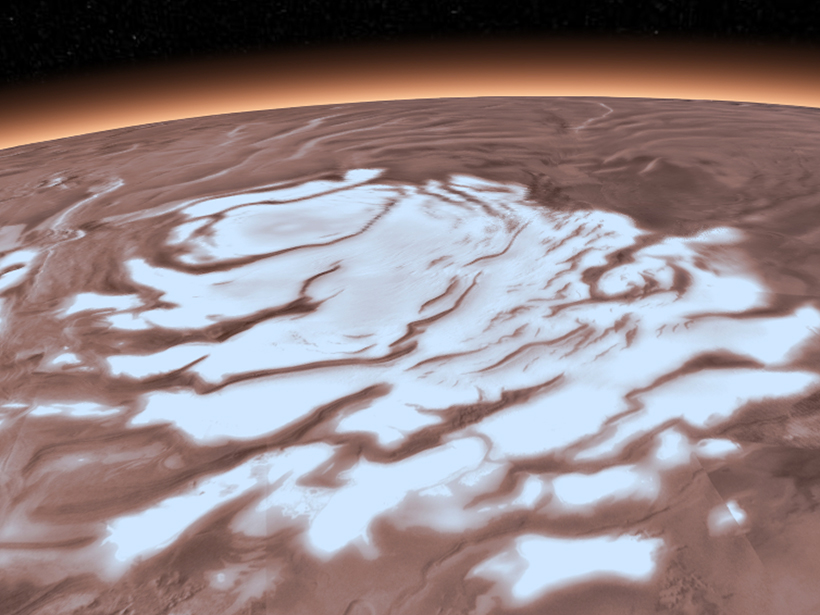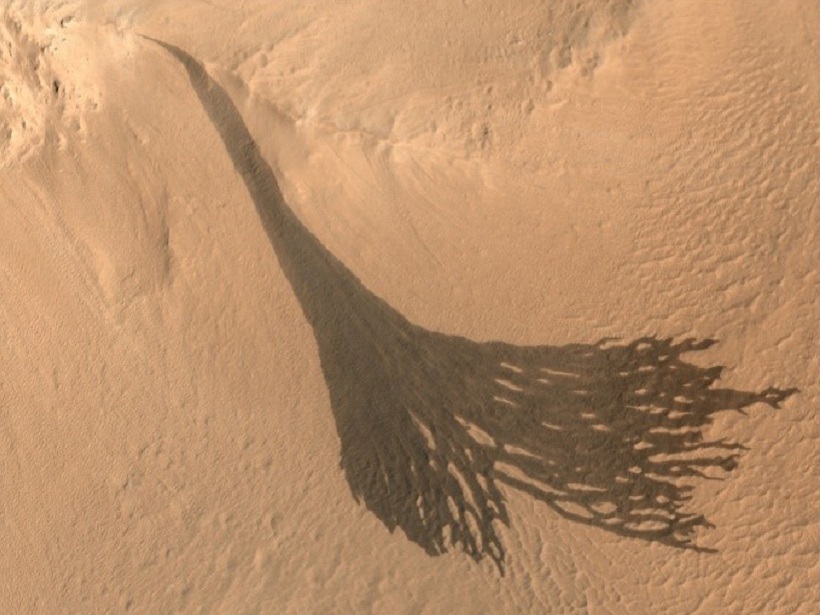Saturn’s moon Titan has rivers that empty into seas…but where are the deltas?
planetary surfaces
Curiosity Monitors Rare Global Dust Storm From Mars’s Surface
Since the 1970s, no surface platform had made meteorological measurements of a global dust storm on Mars, but last summer NASA’s Curiosity rover witnessed one of these rare events.
Resurrecting Interest in a “Dead” Planet
New research suggests that the surface of Venus is busy, but it may take new missions to our “sibling” planet to confirm this.
Detecting Carbonates on the Surface of Mars
A new study shows how a warm, wet climate weathered rocks on early Mars.
Titan’s Northern Lake District Has Hidden Depths
Radar and infrared data from flybys reveal new details about Titan’s northern lakes.
A New Way to Analyze Evidence of Martian Oceans
Mars’s aqueous past holds the answers to many questions about the Red Planet. A new study provides a tool for scouring planetary surfaces for ancient shorelines.
What Ancient Rivers on Mars Reveal About Its “Great Drying”
Dried-up rivers on Mars suggest that the planet was wet in the not-too-distant past.
Local Heat Source Needed to Form Liquid Water Lake on Mars
Thermal modeling suggests that active magmatism in the past few hundred thousand years could account for the presence of a large lake previously hypothesized beneath the Red Planet’s southern ice cap.
New Hints About How Martian Moons Formed
A new study finds that Phobos includes chunks of Martian crust.
Revisiting Enigmatic Martian Slope Streaks
Slope streaks of different sizes and shapes are a common feature on the surface of Mars, but scientists disagree about the mechanisms for their formation and development.

